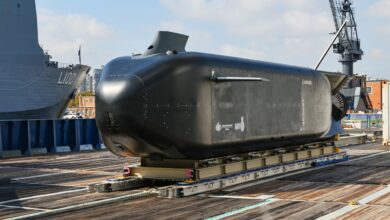University of Technology Sydney (UTS) and DroneShield, a Sydney-based defense tech firm, have developed an optical system to better identify and help neutralize armed drones.
The system utilizes a Convolutional Neural Network (CNN) to detect, identify, and track potentially threatening Unmanned Aircraft Systems (UAS), explained Dr. Nabin Sharma, project lead and co-director of the UTS Intelligent Drone Lab.
CNN is a deep learning algorithm that analyzes visual imagery and helps differentiate one object from another.
The software, DroneOptID, uses geographical and environmental data from other sensors to detect drone movement, then motion tracking and machine learning capabilities to identify and track the target.
DroneOptID also assists operators in manually identifying the characteristics of the drone, including its payload and effectiveness to ensure a proportionate, effective response.
“The algorithm enables the vision system to see what’s happening, to collate data and process it for ultra-fast image recognition and analysis,” Sharma said.
“This delivers a speedy and efficient assessment of a threat and the decision-making in response to it. The system is able to detect different types of drones and check if there is a payload,” he added.
Project Launched After Saudi Oil Refineries Attack
Developers began work on the concept in November of last year, a month after Saudi Arabia’s oil facilities at Abqaiq–Khurais came under attack from a swarm of armed drones.
The system can be deployed to protect areas such as airports, critical infrastructure, large public spaces such as stadiums, military installations, and battlefield sites where the threat of armed drone strikes is greater.
The project is funded by the New South Wales and Australian governments.
Other Modes of Detection
Optical detection of drones has an edge over conventional radar tracking systems, which often struggle to detect UASs because of their small size, often confusing them with birds, according to Unmanned Systems Technology.
They also have difficulty detecting drones that move slowly or hover, the website added.
The acoustic detection systems where the noise made by drone propulsion systems is compared to a database of sounds is also not very accurate because of the effect of other noise in the vicinity, the website said.
With an optical system of detection, however, specific radio frequency transmission on UAV-specific frequencies can be scanned for, and individual types of drone can even be identified by their command protocols.












